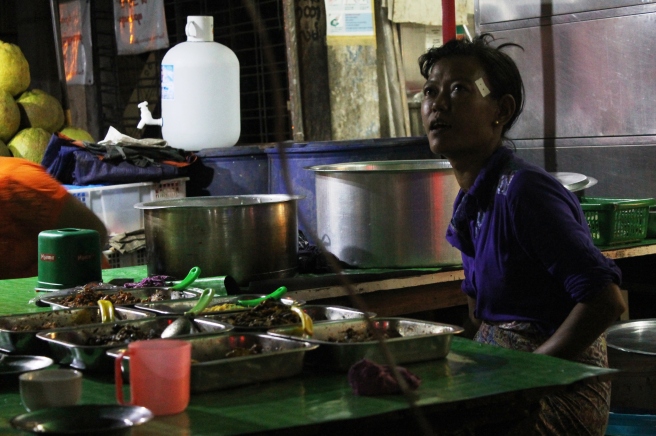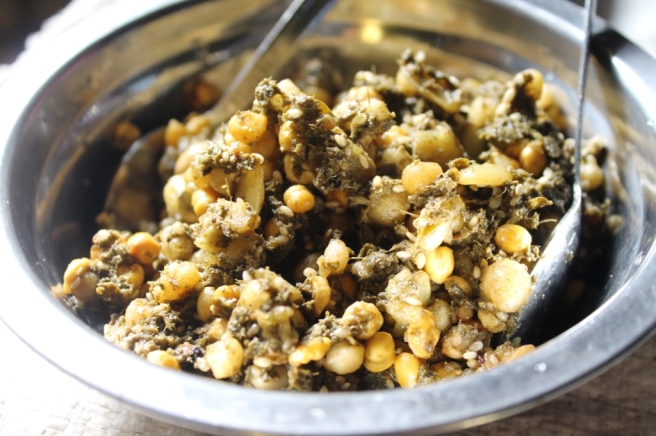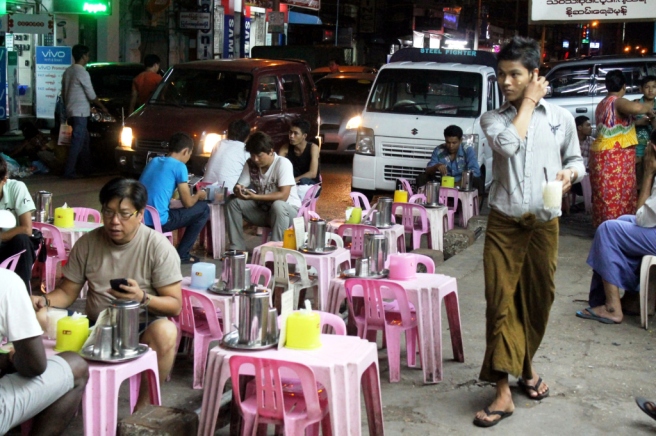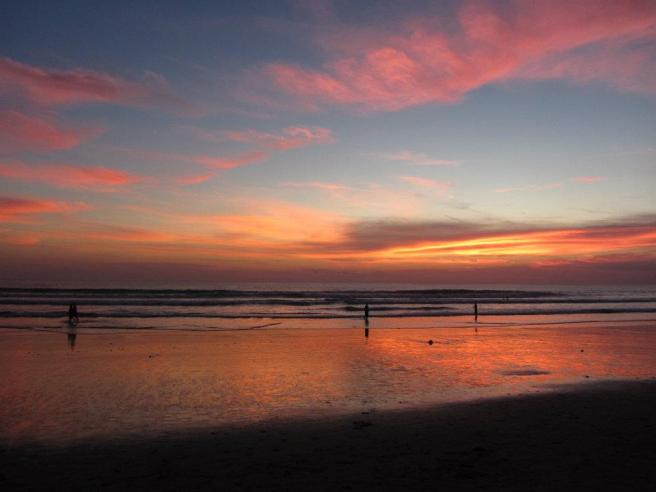On the first day of my month-long trip across Myanmar, I walked across the insanely crowded road in front of my airbnb accommodation to a tiny restaurant that had all of three tables. The slender, fine-boned woman that owned / managed the restaurant did not speak any English. Nor did the rest of her family. Their laminated one-page menu had the names of the dishes in Burmese, transliterated into English. Trying to figure out what was what I quickly realized it was a lost cause altogether.
If I were to eat anything at all, I would have to go with the ‘chef’s choice.’ And I did. What arrived was Shan khauk swè – a simple hand-tossed noodle salad served with a side of pickled vegetables and a bowl of clear soup. The rice noodles were spiced with pickled sour mustard leaves (some of which I brought home from a local Burmese market) and mixed with peanuts, garlic, chilli and garnished with shredded chicken. I wash it down with a tall glass of avacado milk shake.

In Yangon’s streets, women squat in tiny stools in blue and red with their wares spread out in front of them – various types of noodles cooked and piled under a mosquito net to ward off the flies along with a range of spices and condiments in plastic containers. Not phenomenally different from Indian, Burmese cuisine offers simple yet delicious flavors, infused with local ingredients.

Mohinga is Myanmar’s favorite dish. Eating Mohinga for the first time can be intimidating at first, even uninspiring. The entire broth is muddy in color and the crackers smashed into it form the garnish that this dish could do without. The broth itself is very fishy. But Mohinga grows on you, like the theories about street food go elsewhere it is inexpensive and affordable. And Myanmar slurps it by bowls after bowls every morning paying little regard to the prevailing warm weather (Yangon’s humidity levels can sometimes put Chennai to shame). The sellers run out of Mohinga in a couple of hours into the morning hours of their business.

Soon enough, I ate the famous Burmese green tea salad – Lahpet. Pickled green tea leaves are tossed with crunchy nuts, tomato, garlic and seasoned with dried shrimp in this dish. I fell hook, line and sinker for it. Before I left Myanmar, I bought a bottle and packed it with my luggage. Sure it leaked and ruined my tee-shirt but the bottle survived the flight, I am happy to announce.

The Burmese set meal is a delight to order, much more than it is to eat. The extent of English usage doesn’t extend beyond ‘okay’ even in cities like Yangon. So you are left with your devices to order food and hope that what landed on your table is what you ordered in the first place. On a sunny noon, I step into the popular Feel Myanmar restaurant to order my first Burmese set meal. As soon as I sat, a plate of Burmese salad – half-cooked whole vegetables including two types of egg plant, wing beans and spinach is plunked on my table. And then this!

Indian influence in Myanmar cuisine is difficult to ignore. Walk along the streets of Yangon and you can pick at least a few of these similarities – a hybrid puttu-idli snack, a samosa like snack, the usage of coconut and jaggery in sweets, and a kuzhipaniyaram (made with fermented rice batter) like snack called Mo Lembya. The Myanmar Muslim restaurants serve up delicious briyanis and the dosa sold by the street side vendors in Yangon is a delightfully crispy version, albeit a bit too oily, that has a filling of cooked vegetables, peas and egg.

If I had to define the flavor of Myanmar food, Shan khauk swè would be it. Though this dish stands proof to the Thai influences in Myanmar cuisine. The kindly woman on the roadside would take a handful of rice noodle and mix it with crushed chilles and various spices. She would use tamarind sauce a souring agent to spike up the flavor. On request, pan fried chickpea tofu squares and hard boiled eggs, cut into bite-sized pieces, are tossed into the salad.

What was your favorite dish when you travelled in Myanmar? Leave a comment and let me know.






